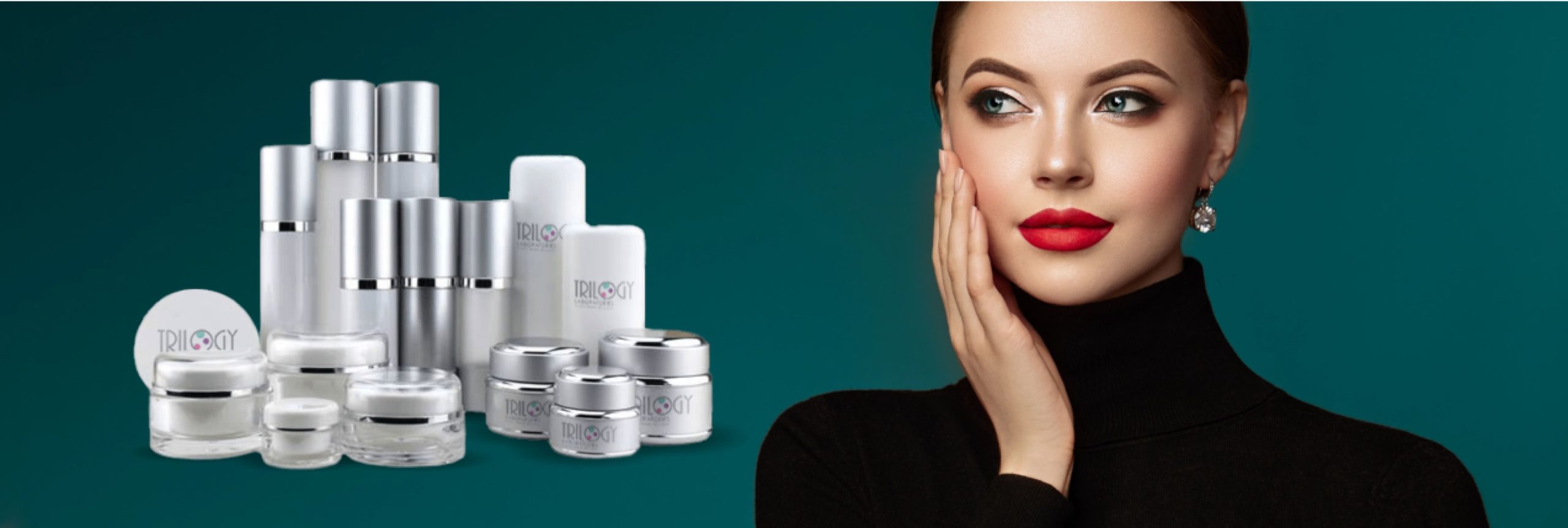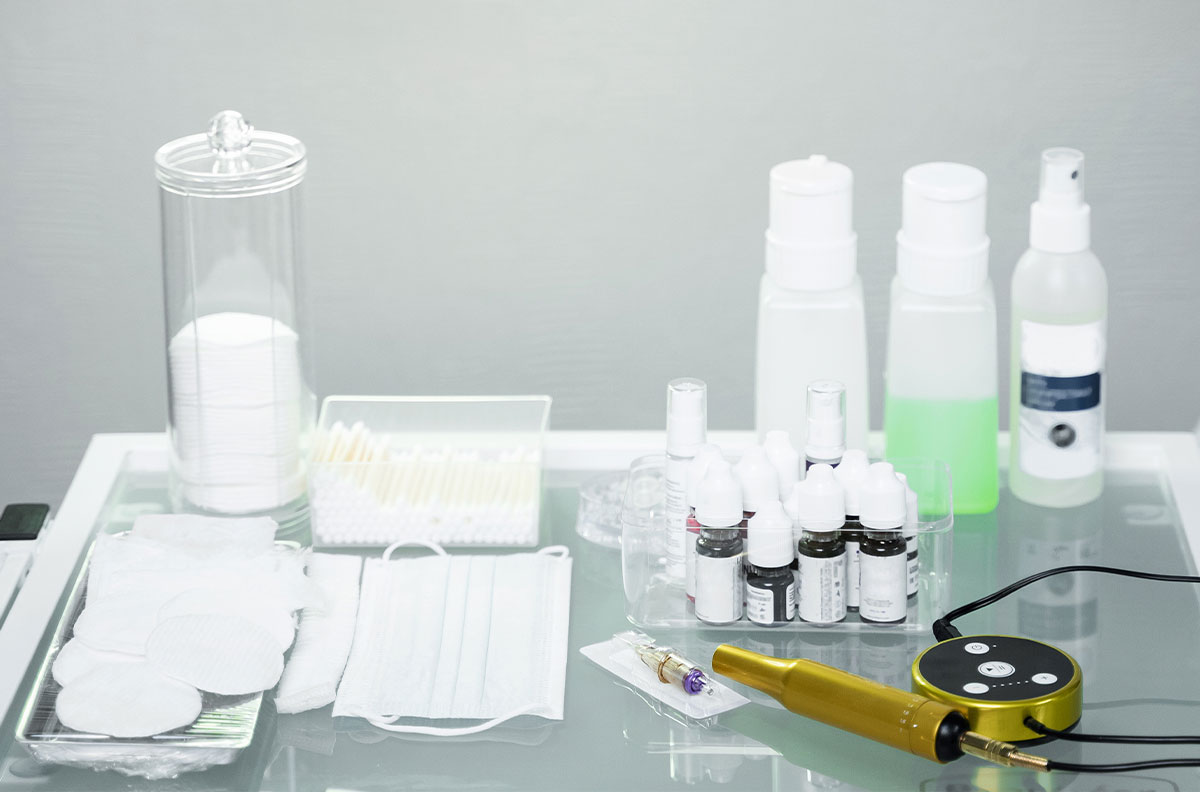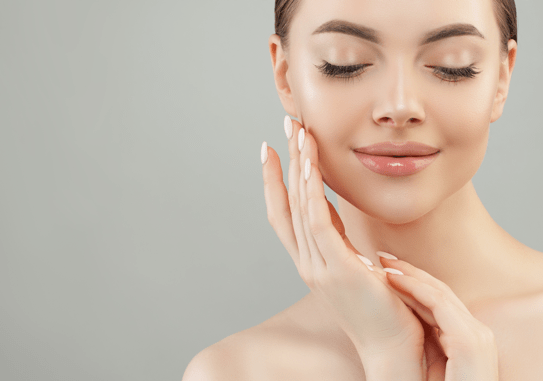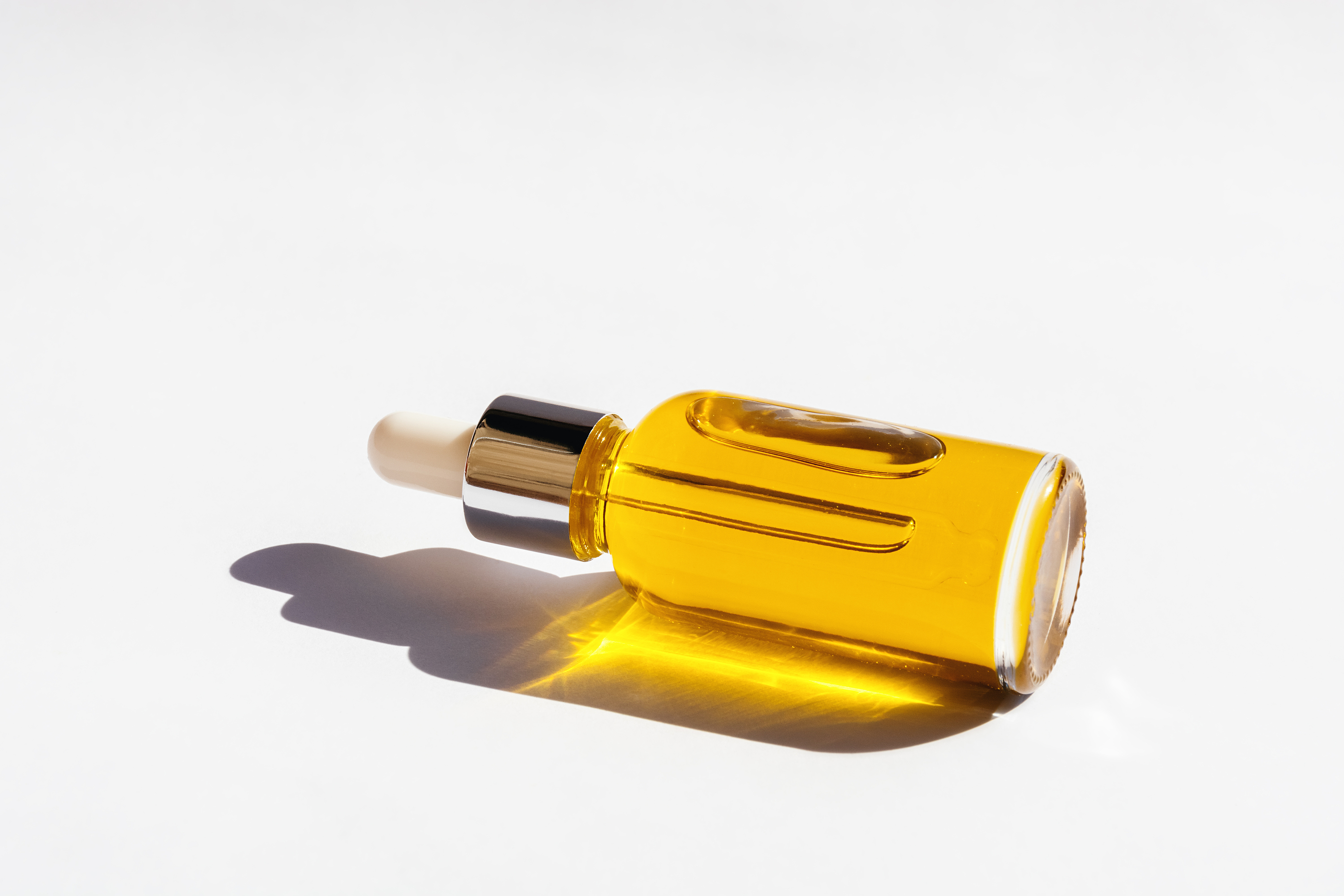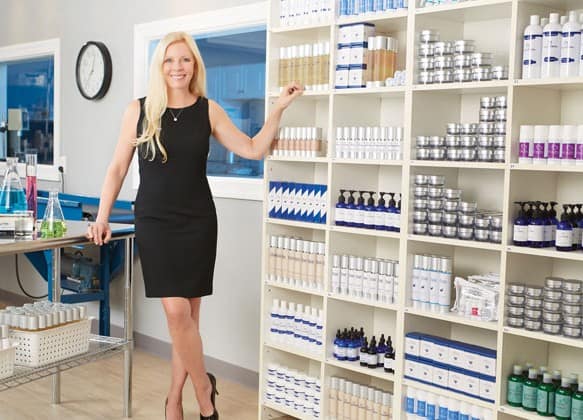Look at the label on your favorite skin care products, like moisturizers, cleansers, or serums. You’ll likely find the ingredients list contains active and inactive skin care ingredients. What do these different ingredients mean for your skin? What should you include in your skin care line?
Each skin care ingredient serves a different purpose. Let’s break down the difference between active and inactive ingredients in skin care, look at some of the most common active ingredients, and see how to layer products to take full advantage of active ingredients.
What Are Active Ingredients in Skin Care?
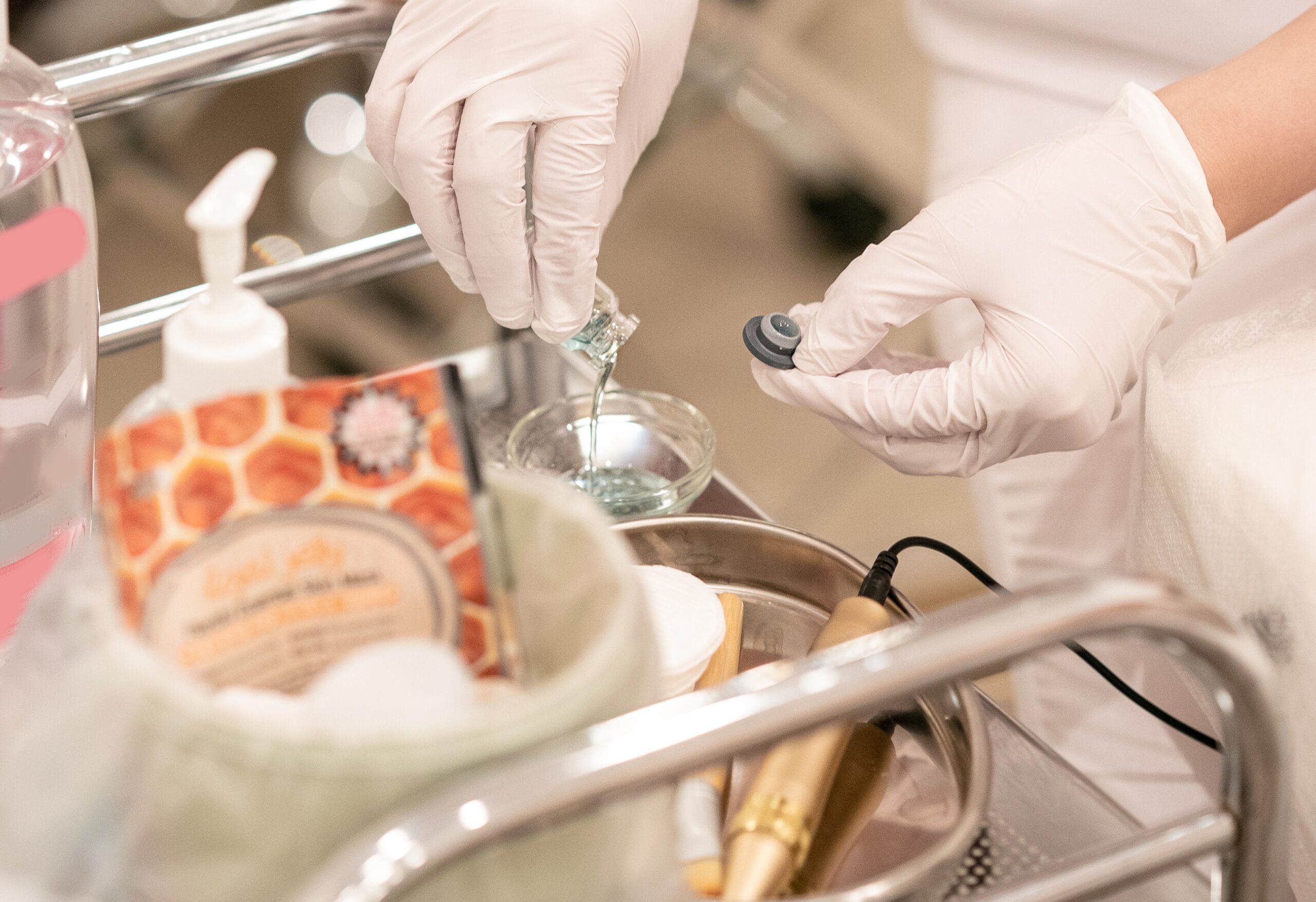
In skin care, cosmetics, and pharmaceuticals, “active ingredients” are ingredients that are proven to have a direct impact on the skin. In other words, active ingredients in skin care are those that target a specific concern and affect the skin in a certain way.
There are hundreds of active skin care ingredients in products lining shelves today, from those that protect skin from the sun to those that provide anti-aging effects.
What Is the Difference Between Active & Inactive Ingredients in Skin Care?
The opposite of active ingredients is, unsurprisingly, “inactive ingredients.” These substances do not target a specific skin care concern or have a direct impact on your skin. Nevertheless, they play an important role in the feel, look, and effectiveness of the skin care product.
Inactive ingredients can act as binding agents, fillers, lathering agents, preservatives, fragrances, stabilizers, and more. Most skin care products require both active and inactive ingredients in order to deliver their promised outcome while ensuring they function properly.

What Are Common Active Skin Care Ingredients?
Some of the most popular and sought-after active skin care ingredients include the following:
- Alpha hydroxy acid (AHAs), including glycolic acid, lactic acid, and citric acid
- Azelaic acid
- Bakuchiol
- Benzoyl peroxide
- Beta hydroxycarboxylic acid (BHAs), including salicylic acid
- Ceramides
- Copper peptides
- Glycerin
- Hyaluronic acid
- Kojic acid
- Niacinamide (Vitamin B3)
- Peptides
- Retinoids (Vitamin A)
- Titanium dioxide
- Vitamin C
- Vitamin E (Tocopherol)
- Zinc oxide
Although there is a wide variety of active ingredients you may find on the label of your skin care products, those listed here are found far more frequently than others.
How to Mix Active Ingredients in Skin Care: 3 Beneficial Combinations
1. Mix Antioxidants & Sunscreen
It’s essential to wear sunscreen every day—that’s skin care 101. But by applying antioxidants like vitamin C in addition to sunscreen, you can increase its protective benefits. Why? Because antioxidants protect the skin from free radical damage (which can lead to premature signs of aging), and the sun’s ultraviolet (UV) rays are a significant source of damaging free radicals.
Antioxidants and sunscreen can work together to catch all the sun damage that sneaks through the clouds and onto your skin.
Vitamin C Antioxidant Emulsion
Our Vitamin C Antioxidant Emulsion is a lightweight, hydrating serum that includes vitamin C to brighten the skin and ceramides to help restore barrier function. You can enjoy the antioxidant power of vitamin C in a gentle product ideal for anyone with sensitive skin.
View Product»
2. Mix Retinoids & Peptides
Retinoids, including retinol, are proven to help treat acne and minimize the signs of aging, making products with these active ingredients the gold standard of anti-aging skin care. At the same time, because these ingredients are so strong, they can also cause redness, dryness, and burning in the skin.
Peptides help ward off irritation caused by retinol (among other things) by stimulating collagen production and skin elasticity. Including both active ingredients in your skin care routine can soothe skin while still providing benefits.
HA Serum with Peptides
HA Serum with Peptides includes several active ingredients, including hyaluronic acid to boost moisture, peptides (tripeptide-5) to stimulate collagen production, and niacinamide to calm skin and improve skin tone. Apply the serum before using your retinoid product to minimize the chance of skin irritation.
3. Mix Niacinamide & Hyaluronic Acid
Niacinamide is a powerful antioxidant that provides a range of benefits for your skin, including hydrating the skin, treating hyperpigmentation, regulating oil production, fighting free radicals, brightening skin tone, and promoting skin elasticity. Similarly, hyaluronic acid is a super hydrator and also encourages collagen, and boosts elasticity.
When used side-by-side in a skin care routine, hyaluronic acid and niacinamide complement each other perfectly, enhancing their benefits and resulting in soft, glowing skin.
Luminessence Serum
With niacinamide to ward off hyperpigmentation, increase moisture levels, and help repair DNA damage, the Luminessence Serum is designed to reduce the signs of aging and prevent dryness. Add the serum into your daily routine to see plump, hydrated skin.
View Product»
What Active Skin Care Ingredients Not to Mix: 2 Combinations to Avoid
While the right combination of active skin care ingredients can maximize effectiveness and bring additional benefits, mixing the wrong ingredients together can lead to redness, rashes, irritation, and a damaged skin barrier.
Stay away from combinations of these active skin care ingredients.
1. Do Not Mix Retinoids & AHAs/BHAs
Retinoids can lead to skin irritation on their own. Combining them with exfoliating AHA (like glycolic acid) or BHA ingredients (like salicylic acid), though, can cause excessive unwanted side effects—from flaking, dry skin to itchy redness. To keep skin happy and to avoid skin damage, alternate days when using these products.
2. Do Not Mix Vitamin C & Benzoyl Peroxide
Mixing vitamin C and benzoyl peroxide will not necessarily harm or damage your skin. However, benzoyl peroxide can oxidize the vitamin C, making it less effective. Use these products on alternate days or, alternatively, apply vitamin C in the morning and benzoyl peroxide products in the evening to make sure they don’t counteract each other.
Find Quality Products with Powerful Active Skin Care Ingredients at Trilogy Laboratories

Are you ready to build your skin care brand or expand your line of beauty products? Skip the messy at-home chemistry and let us formulate, manufacture, and label your skin care products in our one-stop-shop.
At Trilogy Laboratories, our experienced project consultants are ready to guide you through the process of branding high-quality products that align with your company’s vision. We offer a beautiful selection of packaging, low minimum order quantities, and customizable formulas made with natural and scientifically advanced ingredients—all so you can wow your users, develop a loyal customer base, and grow your beauty brand.
Private label skin care doesn’t get any better than this.
Contact us today or call 239.939.5454 to get started with your private label skin care line.
Posted in Professional Skin Care

